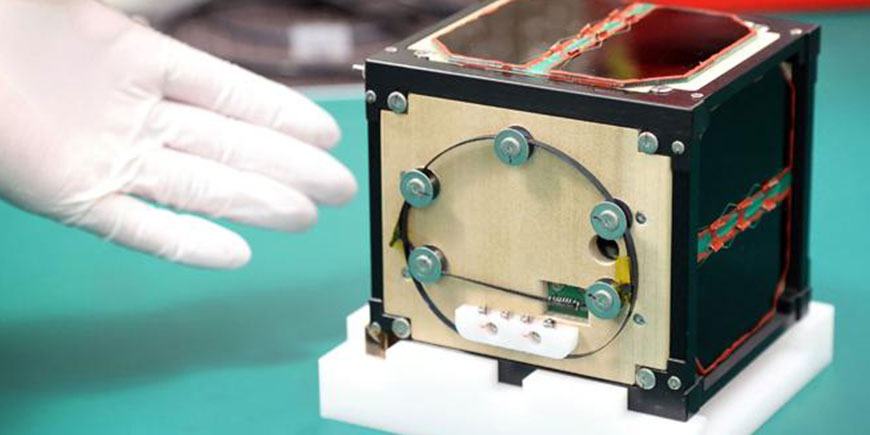LignoSat is the world’s first space satellite made of wood and was designed by Japanese researchers for a less polluting space race.
LignoSat, the world’s first satellite made of wood, has been successfully launched for the International Space Station (ISS). The innovative spacecraft, a collaboration between the Japanese forestry company Sumitomo and Kyoto University, represents a milestone in sustainable space exploration.
The launch took place on 5 November at 11.29am local time from the Kennedy Space Center in Florida aboard a SpaceX Falcon 9 rocket carrying LignoSat and other supplies to the ISS.
LignoSat, an environmental satellite
LignoSat is a small 10 centimetre cube made of magnolia wood panels, between 4 and 5.5 millimetres thick, joined together by an aluminium frame, partly constructed using a traditional Japanese technique, without screws or glue. This innovative design reduces costs and has a lower environmental impact than traditional satellite materials. It weighs approximately one kilogram and has solar panels on some sides to power itself.
The idea of building a satellite out of wood was born about four years ago, when researchers from Kyoto University and experts from Sumitomo began studies to develop environmentally sustainable space technologies that would minimise space pollution. According to the researchers, wood could significantly reduce space debris because it burns completely when it re-enters the atmosphere, leaving less residue than conventional materials.

Test for lunar and Mars missions
LignoSat will not be operational until December when, barring unforeseen circumstances, it will arrive at the International Space Station and could be placed in open space for an initial test of the use of wood in ‘extraterrestrial’ conditions.
The purpose of the satellite is to evaluate the resistance of magnolia wood to the extreme conditions of space: solar radiation, microgravity and extreme temperatures. Suffice it to say that the temperature can change from -100°C to +100°C every 45 minutes as it moves from shaded to sunny areas.
LignoSat will send the data to researchers, who will be able to check for signs of deformation and verify its strength and durability in space. This data could open up new possibilities for the use of wood in future missions to the Moon and Mars, where environmentally friendly and low-impact materials are particularly desirable.
A first for Japanese space sector
LignoSat has already successfully passed rigorous safety tests by NASA and the Japan Aerospace Exploration Agency (JAXA), making it the first wooden satellite to be approved for use in space. Experts at Kyoto University have described the project as an “extremely valuable step” for both the space and timber industries, and see the satellite as an opportunity to make greater use of sustainable resources and reduce the environmental impact of space missions. In fact, wood is a more durable material in space than on Earth because in orbit there is no water or oxygen to cause it to rot or ignite.
LignoSat is an important example of how technological innovation and ecology can come together to take space exploration in a new direction, demonstrating that traditional materials such as wood can play a role in the future of space.


